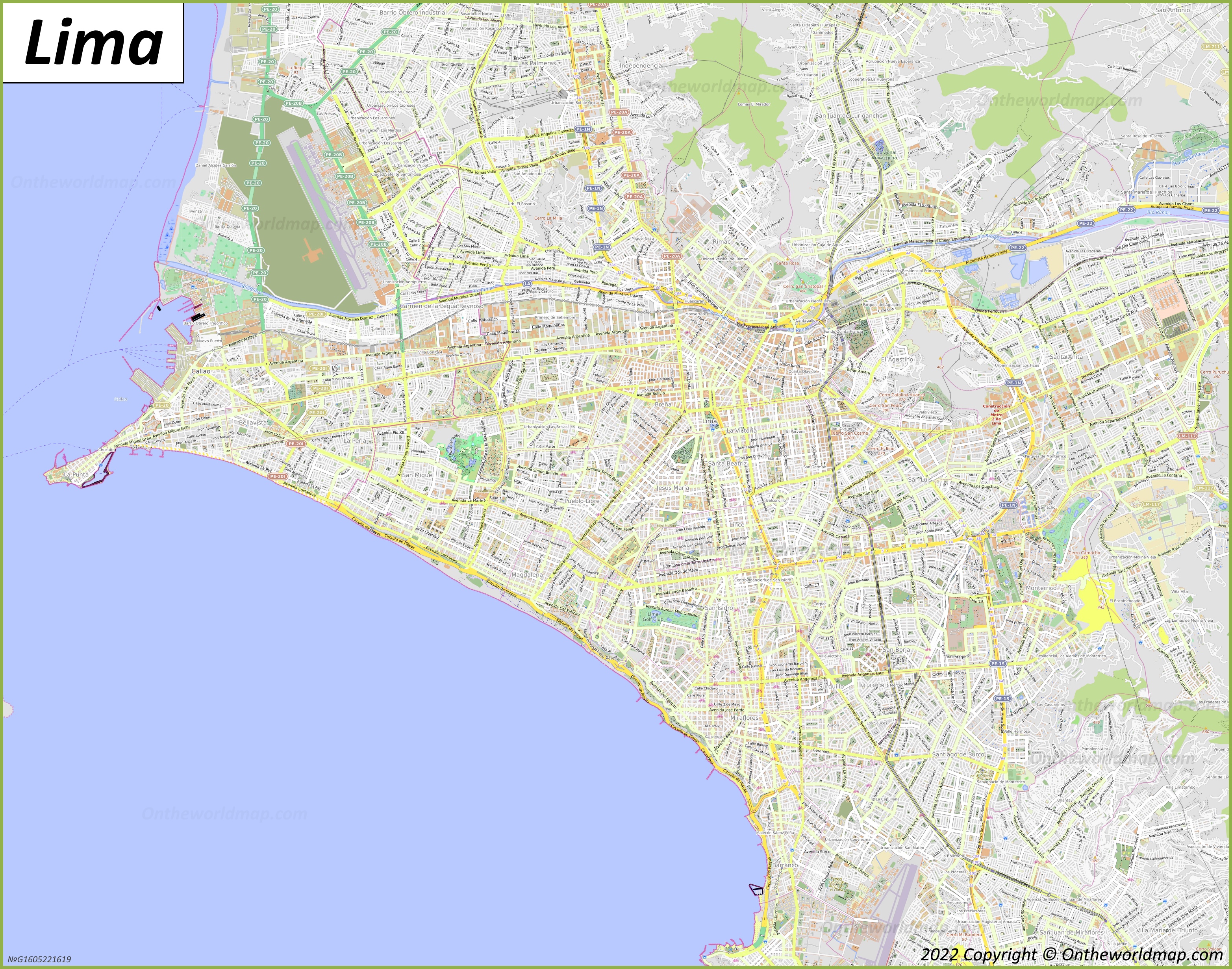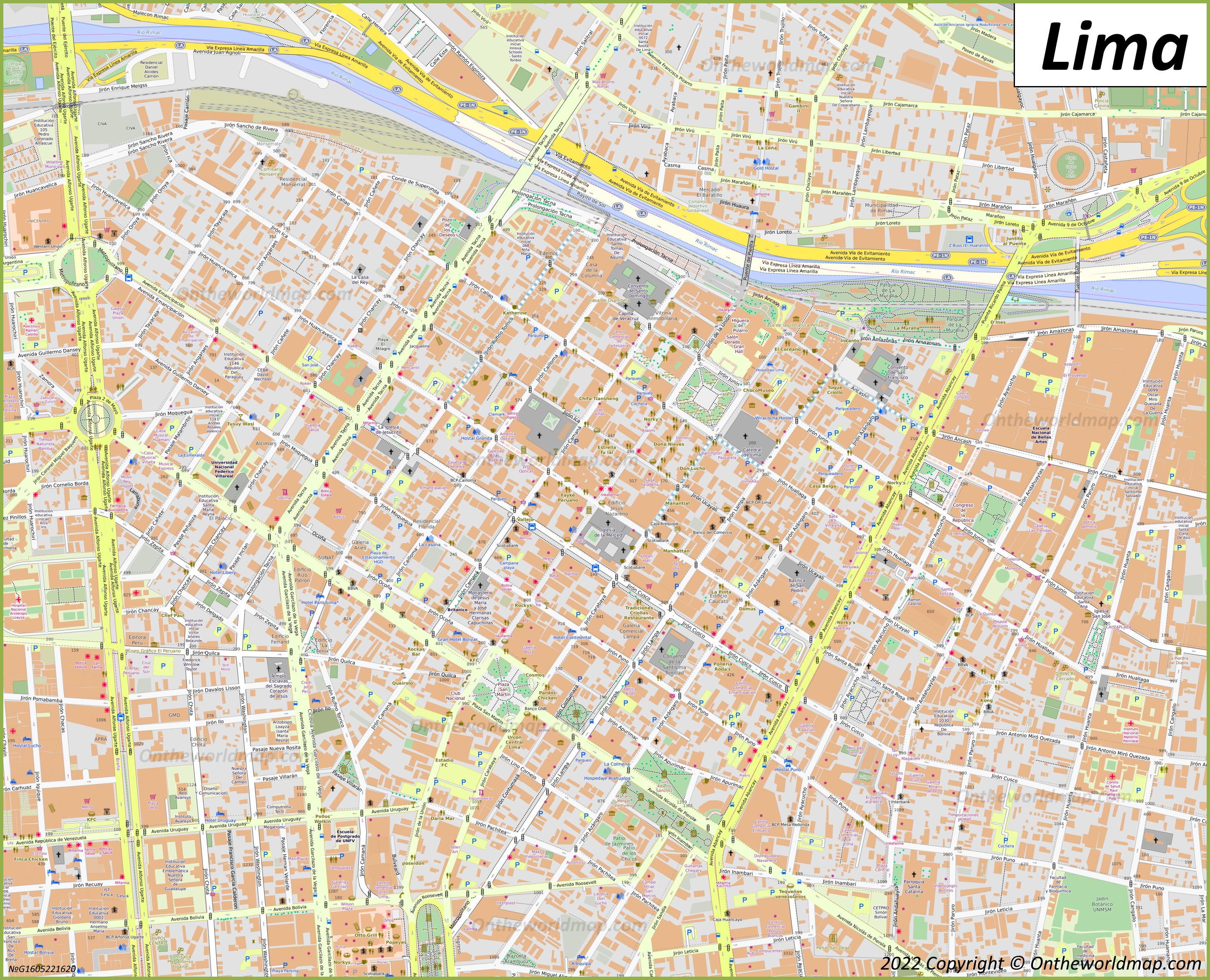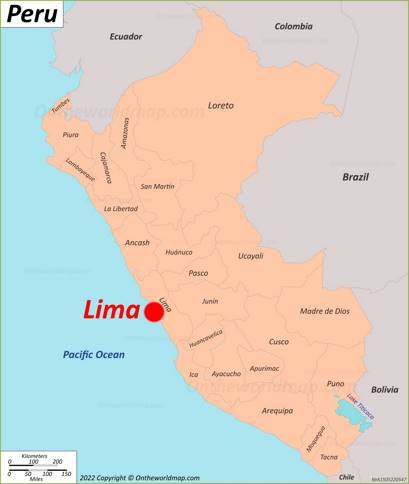Lima Map
Description:
Size: 3129x2461px / 3.5 Mb
Author: Ontheworldmap.com
Map based on the free editable OSM map openstreetmap.org.
You may download, print or use the above map for educational, personal and non-commercial purposes. Attribution is required. For any website, blog, scientific research or e-book, you must place a hyperlink (to this page) with an attribution next to the image used.
Description:
Size: 2897x2346px / 3.53 Mb
Author: Ontheworldmap.com
Map based on the free editable OSM map openstreetmap.org.
You may download, print or use the above map for educational, personal and non-commercial purposes. Attribution is required. For any website, blog, scientific research or e-book, you must place a hyperlink (to this page) with an attribution next to the image used.
Online Map of Lima
About Lima
Lima is the capital and largest city of Peru, located on the country's central Pacific coast. Founded in 1535 by Spanish conquistador Francisco Pizarro, the city serves as Peru's political, economic, and cultural center. With a metropolitan population of approximately 10.1 million inhabitants, Lima is the third-largest city in the Americas, after São Paulo and Mexico City.

The city was established as the "City of Kings" and became the capital of the Viceroyalty of Peru, making it the most important city in South America during the Spanish colonial period. Lima's historic center, known as Centro Histórico de Lima, was declared a UNESCO World Heritage site in 1988 due to its well-preserved colonial architecture and cultural significance. The district features notable landmarks such as the Plaza Mayor, Lima Cathedral, and the Archbishop's Palace.
Lima's economy is diverse and represents more than two-thirds of Peru's industrial production. The city is home to the country's main financial institutions, major corporations, and the Lima Stock Exchange. The Jorge Chávez International Airport serves as Peru's primary gateway for international air traffic.
The city is renowned for its gastronomy, earning recognition as the "Gastronomical Capital of the Americas." Lima's cuisine reflects a fusion of indigenous Peruvian, Spanish, African, Chinese, and Japanese culinary traditions. Popular dishes include ceviche, lomo saltado, and anticuchos. The city hosts several prestigious restaurants consistently ranked among the world's best.
Among Lima's significant cultural institutions are the National Museum, the Museum of Art, and the Larco Museum, which houses an extensive collection of pre-Columbian art. The city features numerous pre-Inca archaeological sites, including Huaca Pucllana, a clay and adobe pyramid built between 200 and 700 CE. The modern district of Miraflores, known for its shopping areas, gardens, and coastal views, is home to the Larcomar shopping center built into cliffs overlooking the Pacific Ocean.
Lima experiences a unique climate characterized by mild temperatures, high humidity, and very little rainfall. Despite being located in a tropical region, the cold Humboldt Current and the Andes Mountains create a microclimate where temperatures typically range from 59°F to 81°F (15°C to 27°C). The city is often covered by a gray blanket of clouds called "garúa" during winter months, from June to December.
The Facts:Province: Lima.
Population: ~ 10,092,000 (2023).
Metropolitan population: ~ 11,285,000.
Regions: Lima Centro, Lima Norte, Lima Sur, Lima Este, Callao.
Main sights: Basilica and Convent of San Francisco, Lima Metropolitan Cathedral, National Museum of Archaeology, Anthropology and History of Peru, Museum of Natural History, Museo de la Nación, Larco Museum.



